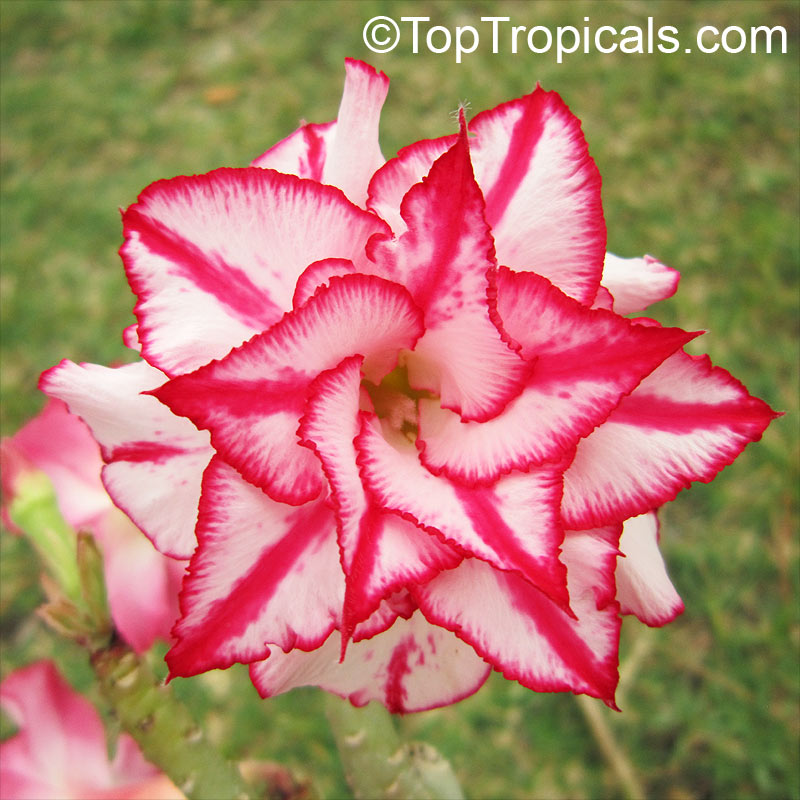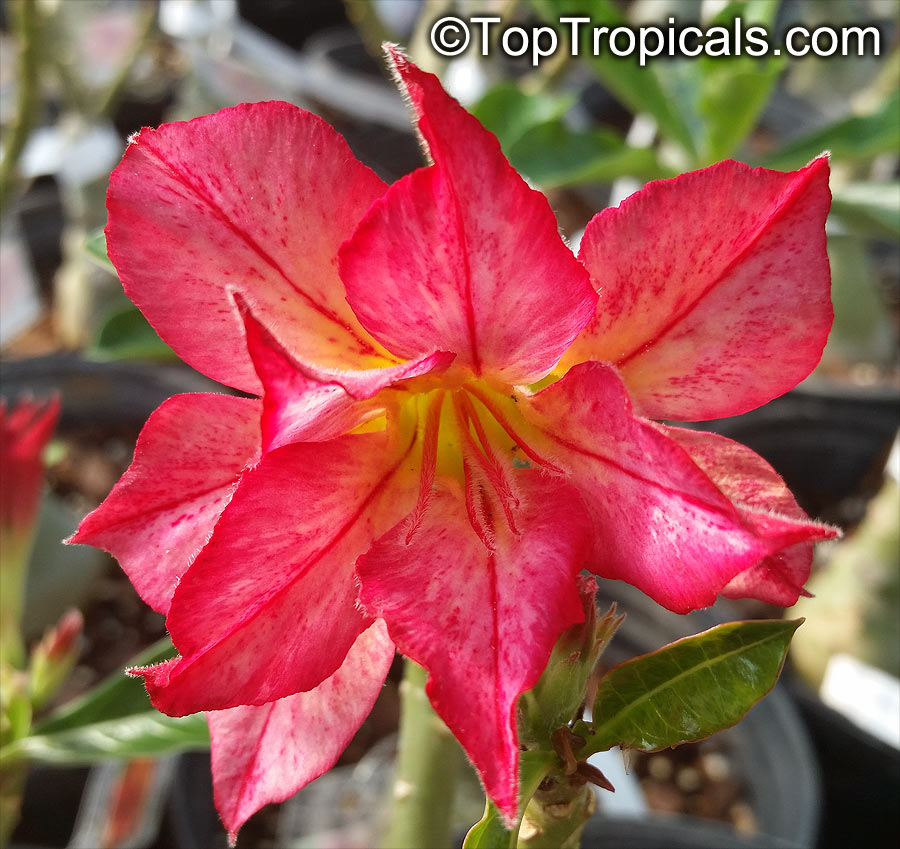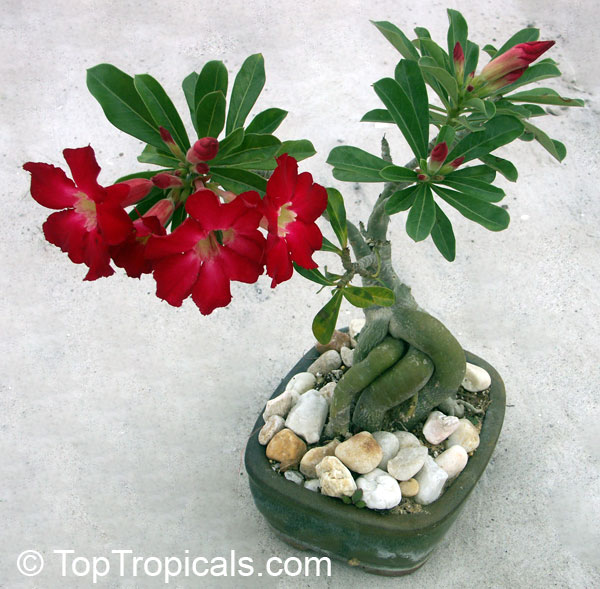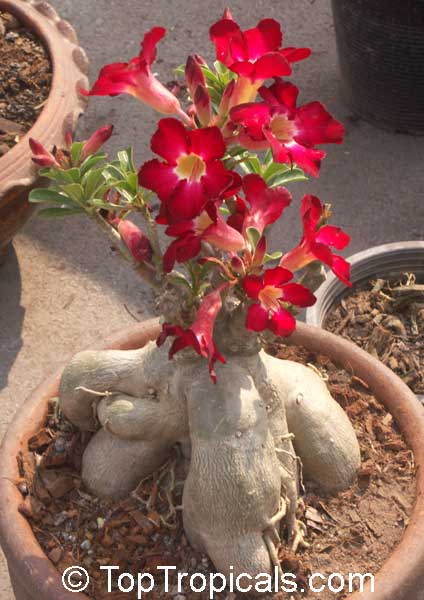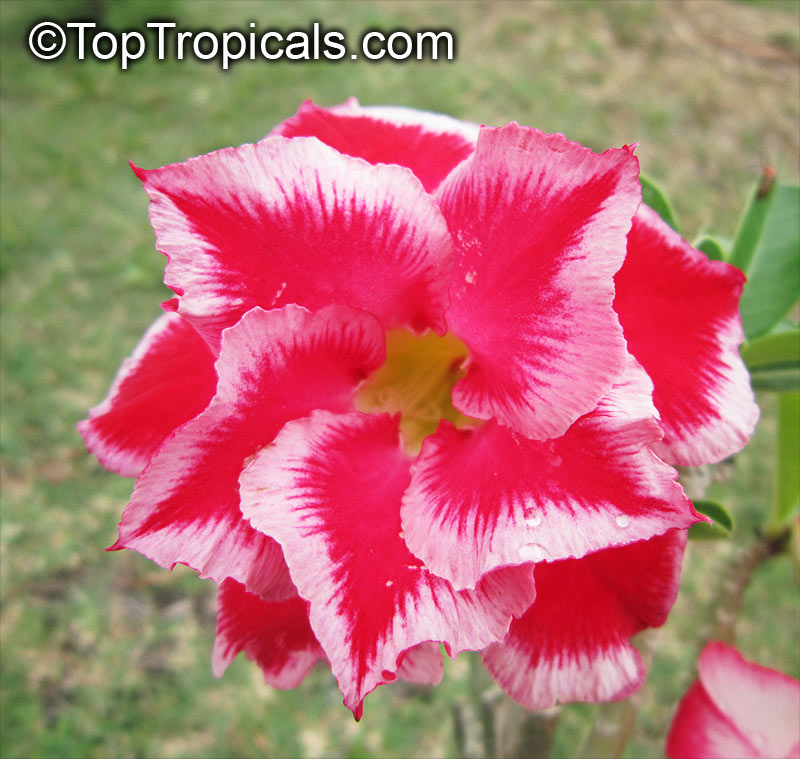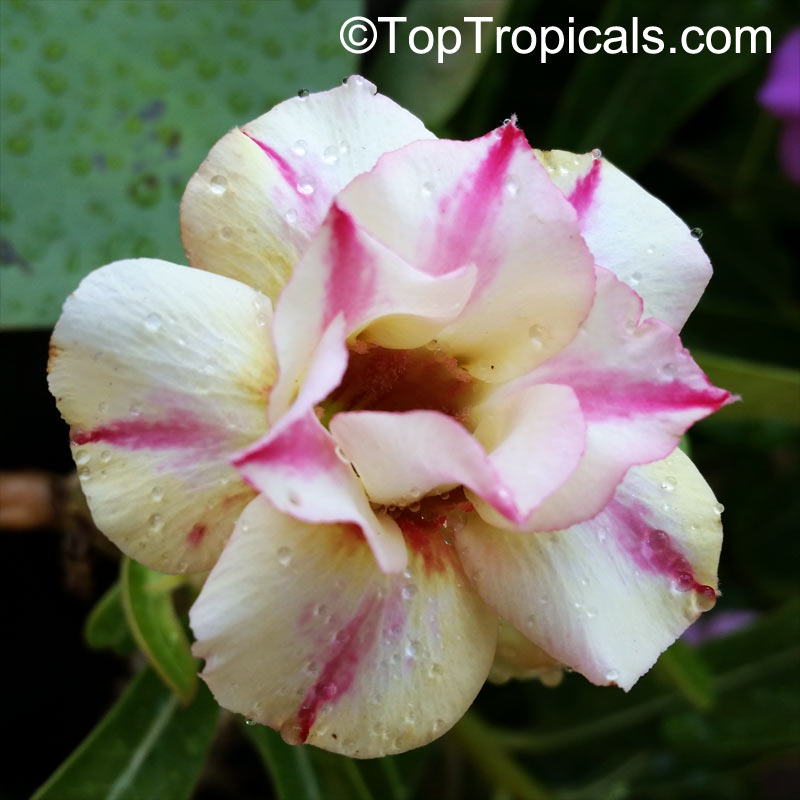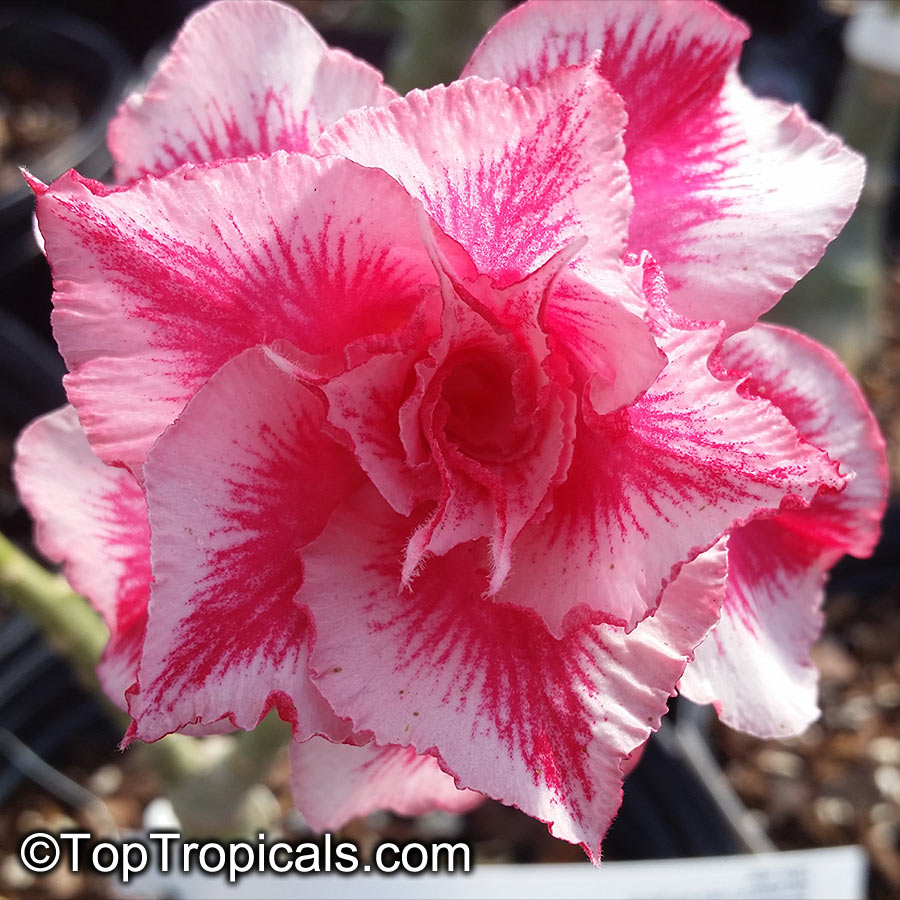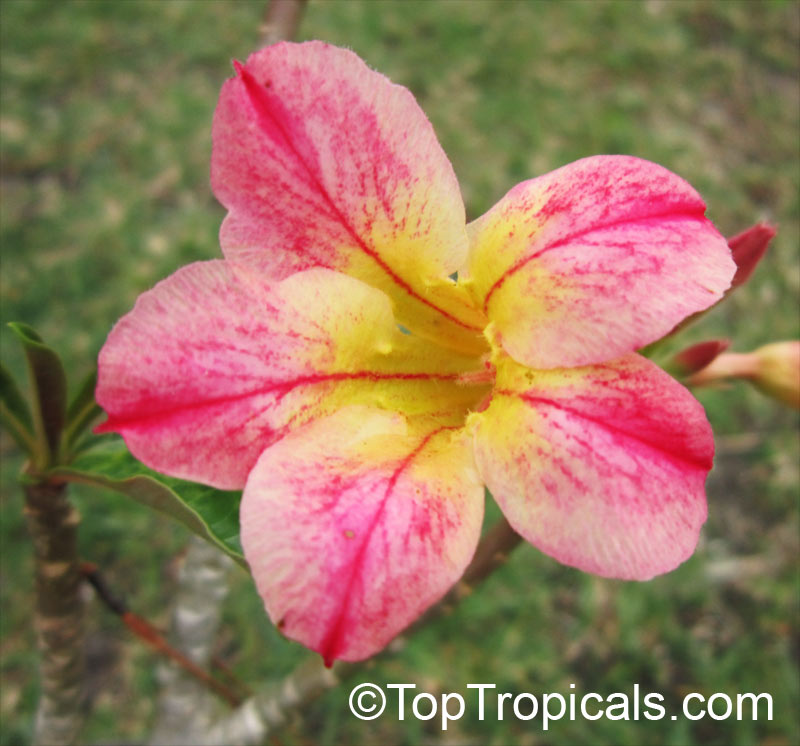Allure of the Tropics
Adenium: a Rose by any Other Name
 Author: Jane Jordan
Author: Jane Jordan
Jane Jordan is a horticulturist and has studied and worked at the RHS botanical gardens in Cannington, England.
She now lives in Sarasota, Florida. Alongside her passion for horticulture, she is also a novelist.
Quick Facts:
Botanical Name: Adenium obesum
Common Names: Desert Rose, Impala Lily, Sabi Star, Kudu and Mock Azalea
Origin: Africa & the Middle East
Zone: 10a - 12
Exposure: Full sun for maximum flowering
Growth Rate: Slow
Soil: Very well drained, sandy and alkaline soils are ideal
Water: Weekly in summer
Flower Color: Many
Bloom Time: During warm months with sporadic flowers throughout the year
Mature Size: 3-5 feet
Propagation: Easy cuttings from stem tips, seeds for caudex growing
Fertilizer: During the growing season - June and October
Pests/Diseases: Occasional mites Aphids and Mealy bugs
Cautions: Stems & roots contain poisonous sap
In Your Landscape: Use as specimen, excellent container plant
Other: Drought tolerant and some salt tolerance
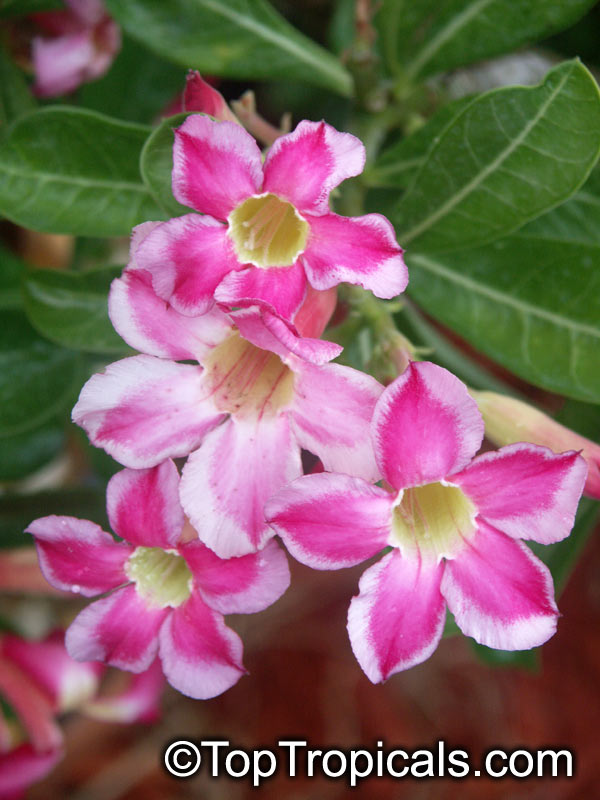 The famous quote is often used to imply that the names of things do not affect what they really are, in the case of The Desert Rose (Adenium obesum) it is not a rose at all, rather a succulent that thrives in hot, dry and sunny conditions. These spectacular plants have no relation to the rose family, they are a species of flowering plant from the dogbane family, Apocynaceae. The naming of this plant is partly correct as they originate in sub-Saharan Africa and the Arabian Peninsula, where they can grow into large trees with huge swollen trunks.
The famous quote is often used to imply that the names of things do not affect what they really are, in the case of The Desert Rose (Adenium obesum) it is not a rose at all, rather a succulent that thrives in hot, dry and sunny conditions. These spectacular plants have no relation to the rose family, they are a species of flowering plant from the dogbane family, Apocynaceae. The naming of this plant is partly correct as they originate in sub-Saharan Africa and the Arabian Peninsula, where they can grow into large trees with huge swollen trunks.
Even with high humidity, Desert Rose does very well in Florida, they are typically grown as container plants, and happy to live in a large pot for years. Often, the more restricted its roots, the better it flowers. They also do well as bonsai specimens.
Most flowers are produced in the warmest months, although they will bloom sporadically if the weather is mild. The star shaped flowers come most typically in shades of pink, red and white, but there are more exotic species available from Thailand, which have double flowers and interesting colors and variations.
During summer allow the top 1-2 inches of soil to dry between waterings, and then water deeply once a week. In winter, once a month watering is sufficient. This plant will often lose it leaves in winter, and sometimes there will be no foliage, just blooms and stems. Desert Rose grows slowly, there has been observed heights of about 6 feet in South Florida, but normally they are much smaller.
The unique stems of a Desert Rose are often swollen with a bulbous appearance, giving an interesting character to this plant. They are one of the easiest plants to grow, and being drought tolerant, they only need well drained soil to flourish. Even though they thrive in full sun, they will grow in part shade, although have a tendency to get leggy.
A low dose of liquid fertilizer can be applied during the summer growing season, but if you forget, this plant is very forgiving. The one thing that kills this plant most frequently is over watering
Desert Rose is typically propagated by seed or stem cuttings.
One caution, a highly toxic sap is produced in its roots and stems, this sap is used as arrow poison throughout Africa, so if the sap comes in contact with the skin wash it off immediately.
More info:
Adenium care: growing instructions
Top Tropicals Slideshow: Desert Roses
See also info on deciduous plants
Buy multi-colored adeniums from our store
